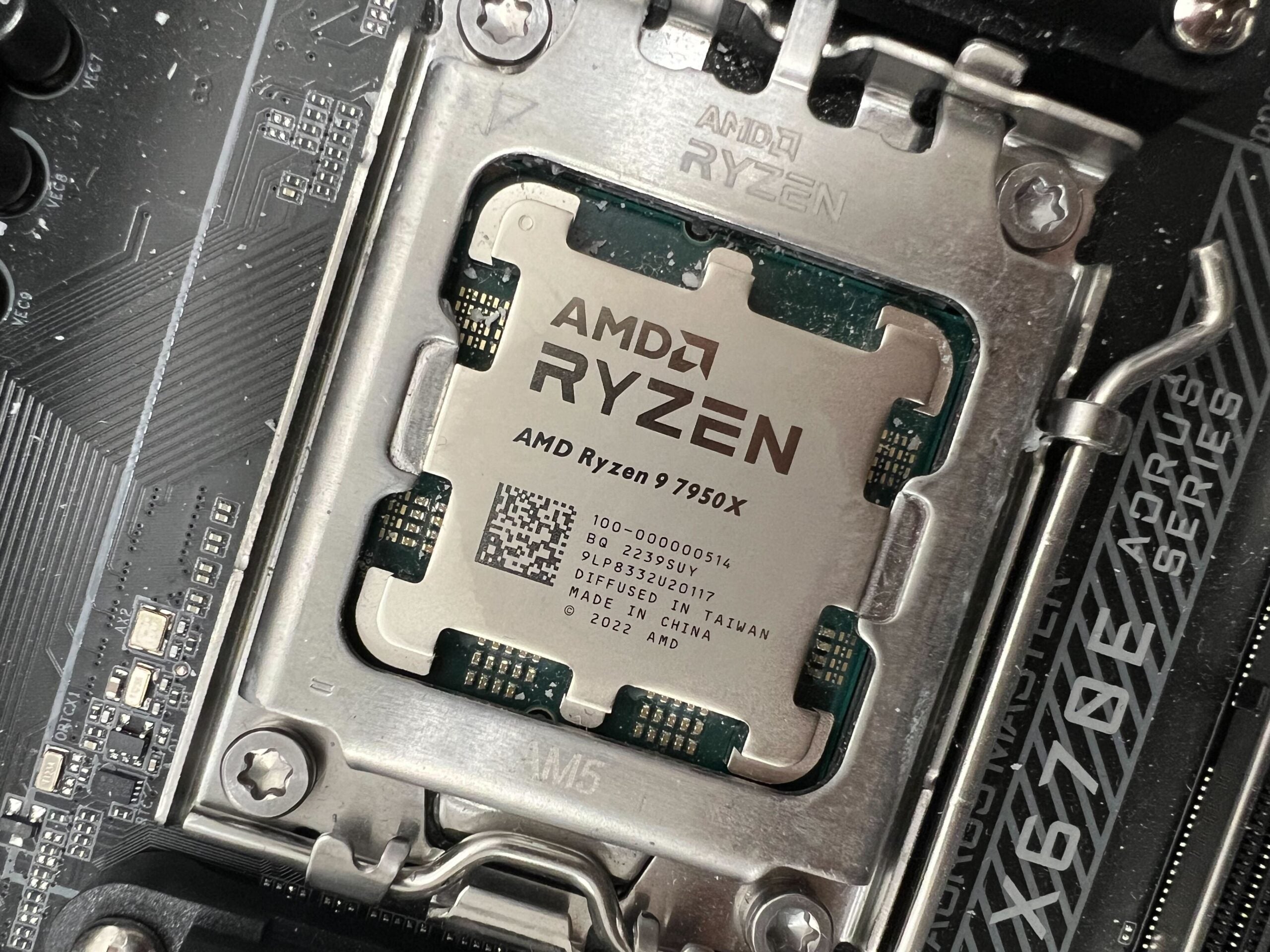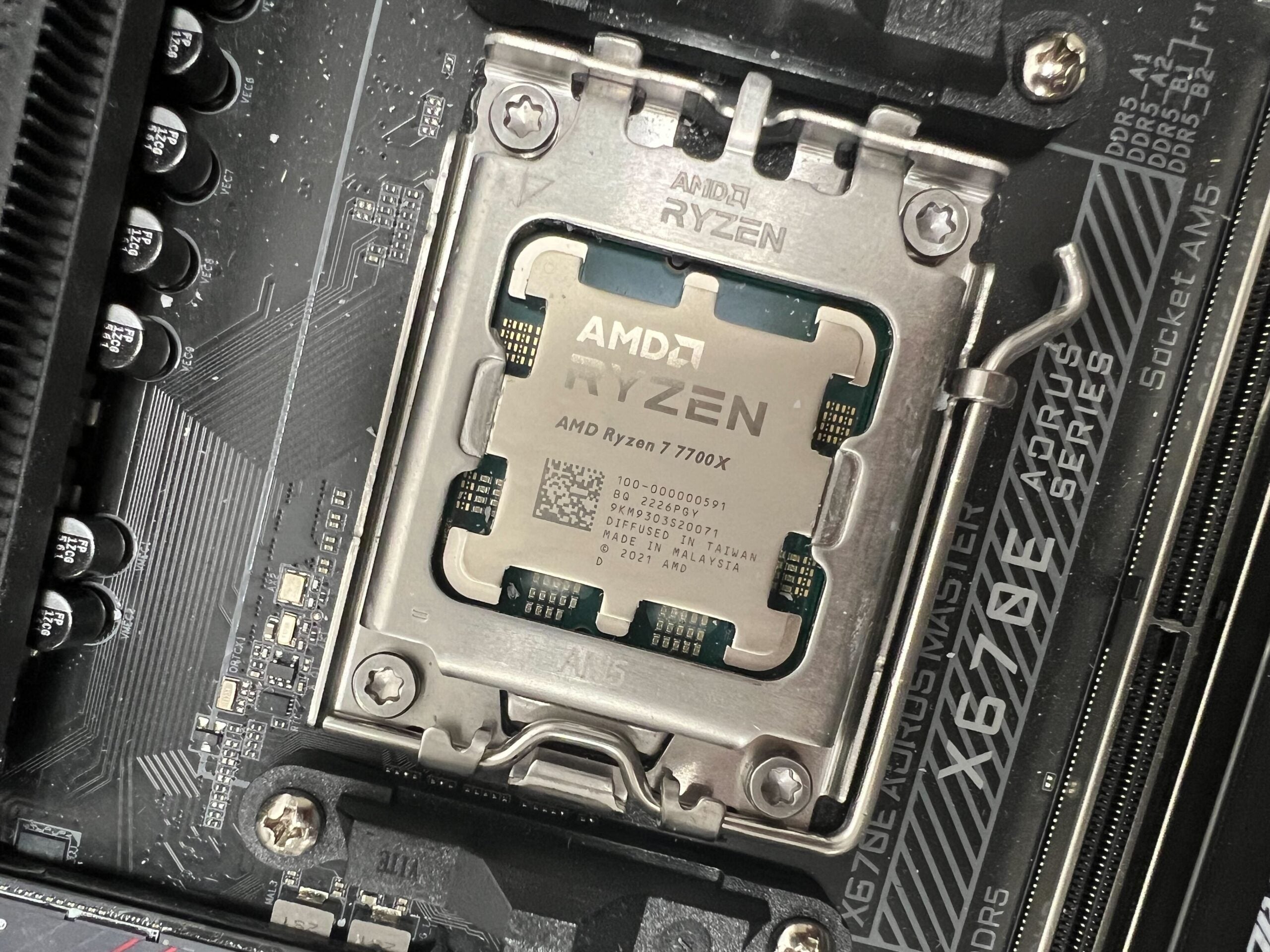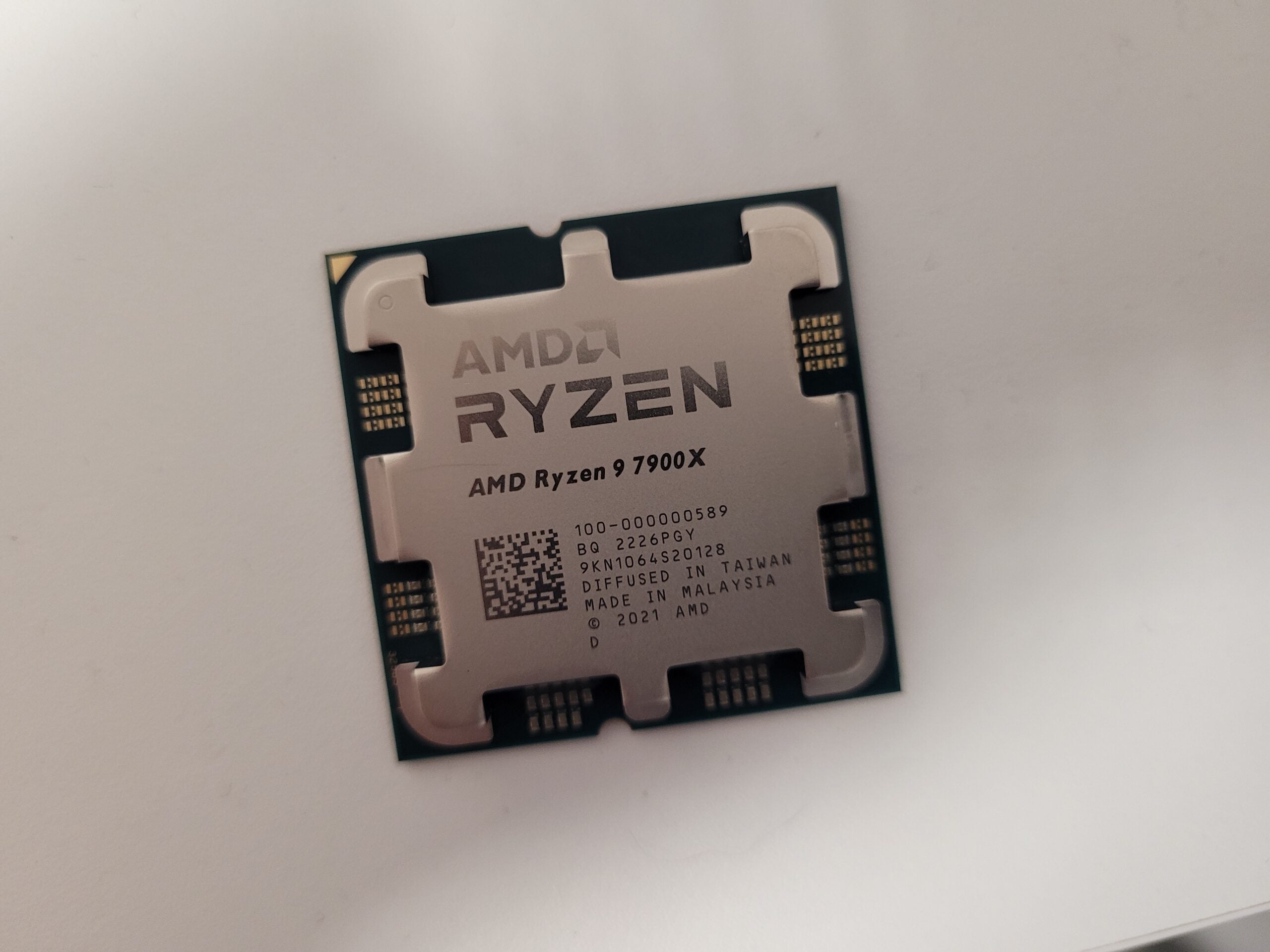Intel Core i5-14600K Review
The workhorse of gaming still holds its mantle, despite no major changes



Verdict
The Intel Core i5-14600K sits at the bottom of the range but it brings impressive value. For gaming and professional tasks, performance is impeccable. However, compared to last-gen, there’s been few tweaks.
Pros
- Strong performance in game
- Best value processor right now
- Reasonable temps and power draw
- Price remains the same as last gen
Cons
- No major hardware advancement
- Better professional picks elsewhere
- Lacks Intel’s APO tech
Key Features
- 14th Gen Intel Core architectureThe Core i5-14600K features Intel’s refined Raptor Lake architecture, pushed to the extreme with its clock speeds and TDP.
- 14 P & E cores The 14600K features 6 Performance-cores and 8 Efficient-cores, each tailored to specific tasks. Allowing you to game and chat on Discord, knowing neither is impacting the other.
- Backwards compatibilityIntel’s 14600K fits into any LGA1700 socket, as long as it’s from the 600 or 700 series motherboards.
Introduction
The Intel Core i5 series has long been the go-to for gamers on a budget, and the new Intel Core i5-14600K looks to maintain that legacy, albeit with a twist. On the face of it, the new 14th generation doesn’t look set to pull up any trees, but the proof will be in the testing.
Across the 14th Gen range, there have been a few hardware changes, excluding the Intel Core i7-14600K that did gain a few extra efficiency cores. Instead, there are improved boost clocks and power draw along with nifty firmware and software to help with resource management.
I’ve also been testing the Intel Core i9-14900K, which comes with Intel’s new APO technology, or Application Optimization. Think of it as a graphics driver for your CPU, allowing Intel to optimize processor resource usage on a program-by-program basis, whether that’s in-game or in a desktop app, significantly increasing performance in the process. Sadly however, the Core i5-14600K, and its slightly chunkier brother the Core i7-14700K, have missed the boat, as APO is exclusive to the i9 series of chips.
The lack of changes doesn’t set the new Intel Core i5-14600K well for success but there might just be enough changes to whet the appetite. Is this going to be one of the best CPUs around then? Well, let’s find out.
Specs
- Almost identical specs to the Core i5-13600K.
- Clock speeds have been tweaked slightly higher.
- Pricing remains the same as last gen.
Very little has changed with the Intel Core i5-14600K when you compare it with its 13th Gen predecessor. The core counts, cache, hyper-threading, I/O support, DDR support, power draw and pricing are identical to the Core i5-13600K. The only major difference is some slight tweaks to the Performance-core max turbo frequency (boosted by 200 MHz), and the Efficient-core max turbo frequency (increasing by 100 MHz), and that’s it.
The i5-14600K’s RRP sits at a comfortable $319/£310, a similar price to the 13th Gen model at launch. That puts it at just over half the cost of a Core i9-14900K.
With the Intel Core i5, you’ll get 14 cores total. Six of those being Intel’s Performance-cores, with the other eight being Efficient-cores, suited for low-priority applications and programs (think Discord, Slack or Office). On top of that, those Performance-cores come with hyper-threading as well, doubling up the thread count, and on top of that you also get PCIe 5.0 compatibility for the latest storage and GPU solutions, plus support for both DDR4 and DDR5, along with some solid integrated graphics if that’s your jam.
It’ll easily run displays up to 7680×4320 @ 60 fps over DisplayPort, and does have support for DirectX 12, OpenGL 4.5 and more, but I’d highly recommend you pick up a good graphics card if you’re looking to build a gaming PC with it.

Test Setup
Although the Intel Core i5-14600K is more at home in game than in CADCAM software, or buried deep in a render queue in Adobe Premiere Pro, I’ve not let it off the hook and have ran it through some of the most rigorous synthetic and real-world tests out there in the last few weeks. I’ve also grabbed some of its closest competitors and siblings to really narrow down just what this processor can do and to help you decide whether it’s worth the investment.
For the test bed, I’m utilizing as consistent a system as I can across all the processors, to negate any inconsistencies throughout the benchmarking process, you can find the full spec list below:
- Intel Motherboard: ASUS ROG Maximus Z790 Dark Hero
- AMD Motherboard: MSI MAG X670E Tomahawk WiFi
- GPU: Gigabyte GeForce RTX 4080 16GB Aero OC
- RAM: 32GB (2x16GB) Corsair Dominator Titanium DDR5 @ 7200
- Cooler: Corsair iCUE Link H150i LCD Liquid CPU Cooler
- PSU: 1200W Corsair RMx Shift 80+ Gold PSU
- SSD: 1TB Adata Legend 960 Max PCIe 4.0 SSD
- Case: Hyte Y70 Touch
As with the Intel Core i9-14900K testing I’m taking advantage of a number of different tests including the likes of Cinebench, PCMark, Geekbench and a ton of games and 3D Mark runs as well.
All gaming tests have been performed using integrated benchmarks at 1080p on the Ultra profile wherever possible (please note Cyberpunk 2077, is stock Ultra, not the overdrive Path Tracing version). This is to allow the CPU to be the potential bottleneck rather than the GPU itself to have any bearing on the situation. It should give us better visibility on how each processor performs. As you go higher up on the resolution scale, differences between CPU performance will drop off as the load moves away from the CPU and onto the graphics card directly, as it has to render more pixels and frame rates naturally fall.
I’ve also included some price-to-performance ratios for both gaming and professional performance. These look at how much value you get per $ spent in both Cinebench R23 and the average frames achieved across the seven titles and gives us a good way of scoring the value proposition of each chip, comparatively to one another.
Performance
- 14600K is one of the best value gaming processors today.
- It does fall a little flat in some titles.
- Single-core performance is king, but multi-core is lagging.
Given the similarities between the Intel Core i5-14600K and its predecessor the 13600K, it’s no surprise that performance between these two chips was incredibly tight across a number of fields. Cinebench, Geekbench, and PCMark were all within 1-2% of one another across the suite. The 14600K is still an incredibly versatile chip for the money. It’s more than capable of driving some seriously impressive performance in-game, and at this consistently solid price point, combined with the lengthy list of features it supports (DDR5 and PCIe 5.0) it’s a good pick if you’re looking for a budget option for your next gaming PC.
That said, there’s one big caveat to all of this, and that’s that the 13600K exists. Unlike the 14900K, which has its APO support and the 14700K which nets additional Efficient-cores to boost performance, the only thing the 14600K gets is a 200 MHz overclock on the cores that count.
In any other world that would be fine but, given that the price of the last-gen is more than likely to drop rather rapidly now the new generation has landed, it puts the 14600K in a bit of a no-man’s land. There’s less than a 1% difference between the two in game, there’s a 5% increase in power consumption, and a 12 Celsius increase in peak temperature, which honestly doesn’t do this thing any favors. If it had APO or some additional cores, it’d be a different matter, but sadly it doesn’t.
Professional grade performance for the Core i5, was remarkably impressive, in fact, there were a few cases where it even kept pace with the likes of the Ryzen 9 7900X, and even the 7950X3D in some scenarios. That’s surprising given the price delta and overall core count differences between the two.
This can likely be chalked up to the increased single-core performance found in the i5. But still, to keep pace with AMD’s answer to the i7, in multi-threaded workloads is nothing short of impressive.
Unsurprisingly the 14600K performed well in game too. Again that strong single core shone through our testing this time around, particularly in titles like Total War Warhammer and Cyberpunk 2077, where it even pipped the likes of the far beefier Core i9-14900K. Although the latter I suspect may be down to the temperature and power requirements of the Core i9 being too much to handle for our test-bed (and any good system for that matter).
Sometimes less is more, and in this case, the Core i5 certainly shows the way in that regard. One test it did fall short, compared to the i9 was in Dirt Rally and Borderlands 3, which are substantially more multi-core CPU-bound than the rest of the test suite.
Power Consumption and Temperature
The one area Intel continues to fall behind in compared to AMD is in its power, and the Core i5 is no different.
Unsurprisingly given the core clock boosts, it’s significantly hotter and thirstier than the Core i5-13600K. But more impressively, take a quick look at AMD’s product stack and you’ll see that none of AMD’s offerings even come close to the heights this thing hits when it comes to power, with temperatures being similar if not lower in most cases.
It’s the value of this thing though that really makes it stand out. Taking RRP into consideration it easily represents some of the best value out there right now. Certainly for the Intel product range. For multi-threaded performance, it nets a sweet 70.11 points, compared to the Core i9-14900K’s 61.91, and even beats out the last gen 13600K.
As for gaming, it’s a very similar story, with it hitting 0.642 fps per dollar spent, getting close to twice the value of the Intel Core i9. AMD’s best value competition falls similarly to the Ryzen 5 7600X. It pips the Core i5-14600K in-game, averaging 0.65 fps per $ spent in-game, but lacks the punch in the multi-core department by some margin.
Latest deals
Should you buy it?
You want the best value processor out there
The Core i5-14600K represents the best value processor both in-game and in pro-workloads, that money can buy right now. At least, as long as the 13600K isn’t on offer. It packs some impressive multi-core performance, and incredible gaming fps in a tiny package, with all the latest and greatest standards you can get today.
You want to upgrade from 13th Gen
It is effectively a mildly overclocked Intel Core i5-13600K. There are no new features here, no new hardware, just a slight overclock and a re-badge, that’s it. If you’re dead-set on a Core i5, and the 13600K is on offer, get that instead.
Final Thoughts
The Intel Core i5-14600K, similar to its other 14th-generation siblings, is a swing and a miss. It’s Raptor Lake at its absolute limit. There’s some impressive performance here, but there’s not enough to really separate it out from the last generation of Intel chips.
That said, it packs in some incredible grunt, at an impressive price point, and still represents one of the best gaming CPUs you can buy today if you’re after a value chip from Team Blue.
How we test
When reviewing processors it’s important to keep your test-bed consistent. We test a number of processors for each CPU generation launch, using similar or identical components wherever possible.
As for the tests themselves we use a mix of both in-game benchmark tools and synthetic benchmarks to determine performance, and also consider additional features, pricing and niche use-case scenarios to accurately score each product.
Use the same components where possible for fair testing
Use both synthetic and in-game benchmarks for testing
Test both CPU temperature and power consumption.
FAQs
Yes, it does. All of Intel’s 14th gen do, along with being backwards compatible with DDR4. You do need the right motherboard for that however, as DDR4 and DDR5 slots are different.
No, this is limited to Intel’s Core i9 series only at this time.
A Performance core runs faster, and is larger. It’s designed for gaming and high-priority workloads. An Efficient core is for background tasks, and low-priority workloads.








